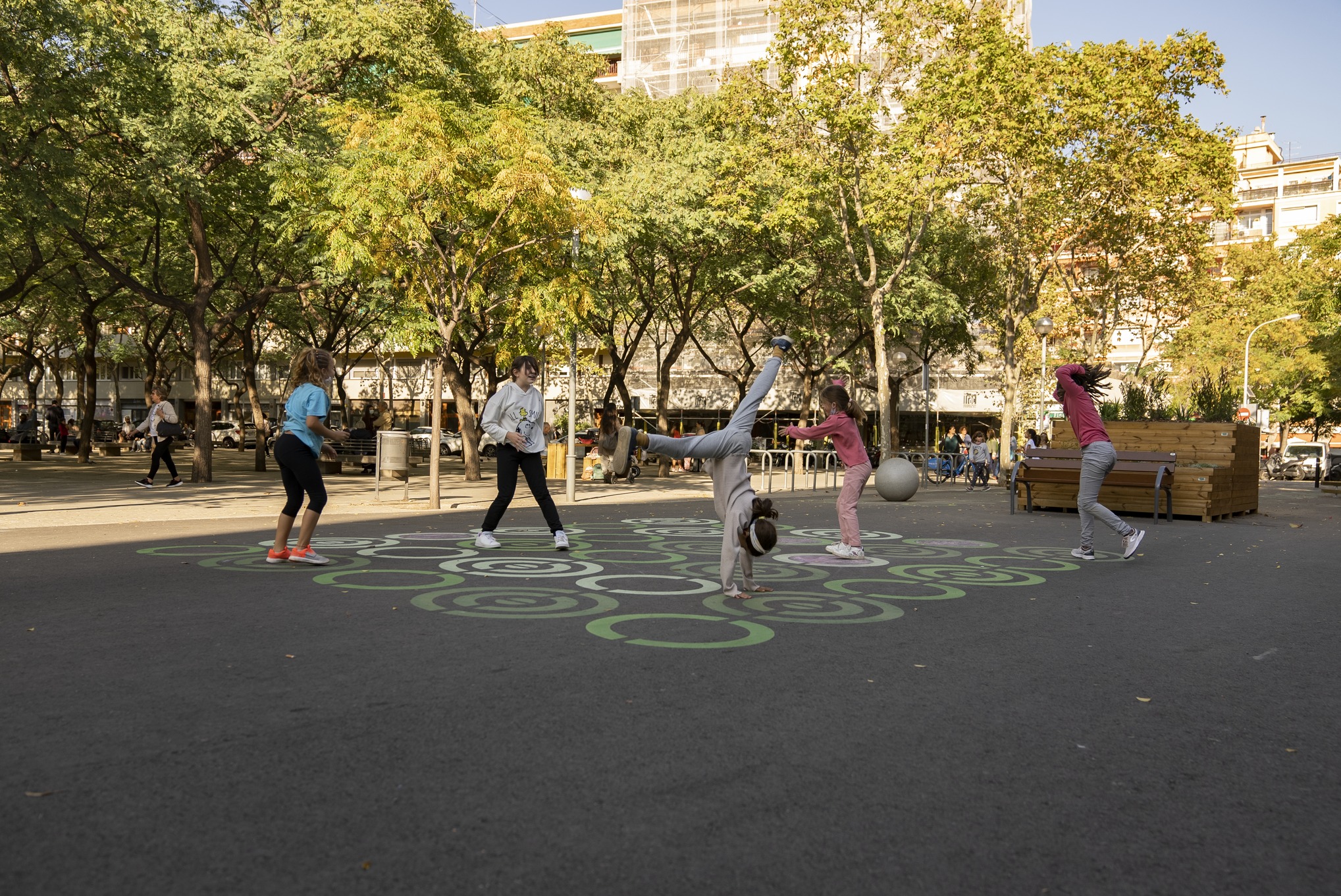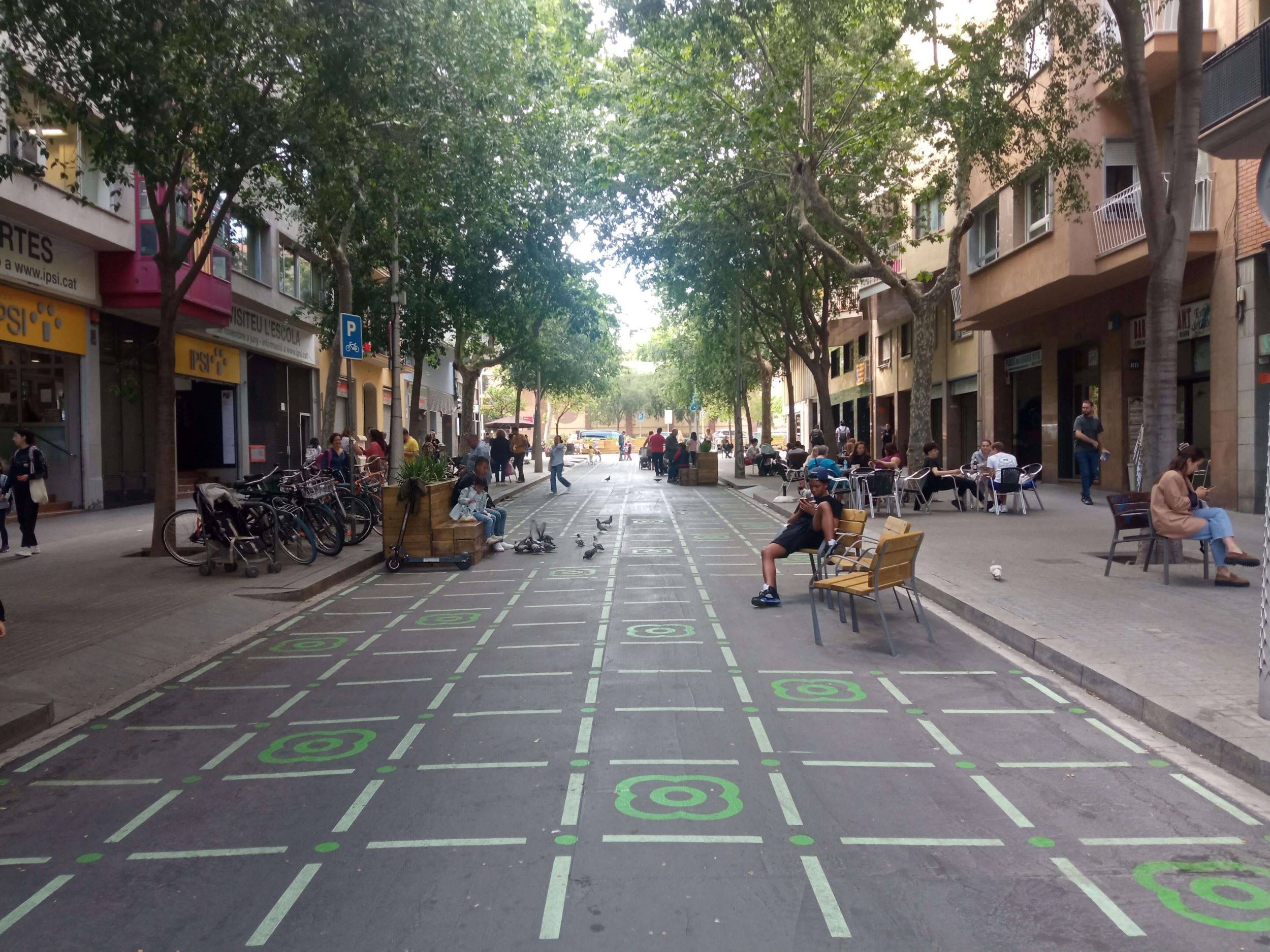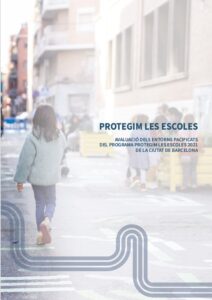
Barcelona’s School Streets program “Protegim Les Escoles” has promoted the transformation and improvement of the streets adjacent to 217 schools in the city of Barcelona using traffic calming measures, new urban furniture and vegetation, and the removal of parking spaces.
A recent evaluation of this program finds that the newly created school streets create healthier, more inclusive and high-quality spaces for children, families and residents. The report highlights the health benefits for children and the surrounding neighborhood. Evidence is growing that school street programs contribute to the improved health and well-being of children and their families.
The evaluation team was led by researchers from the Institute of Environmental Science and Technology of the Universitat Autònoma de Barcelona (ICTA-UAB) and The Barcelona Institute for Global Health (ISGlobal) in collaboration with the city planning team responsible for implementing the program. The study analyses the changes induced by the transformation of eight specific schools, all from the 2021 cohort. The authors examined five dimensions: the use of public space, pedestrian flow, children’s play in the street, motor vehicle traffic and air quality.
The study distinguishes between two types of traffic calming strategies: those that involve the total exclusion of motorised vehicles, and those that allow traffic to coexist with pedestrians. All the schools studied show improvements along the various dimensions. Results were particularly strong in streets with full closure to vehicle traffic. In these streets, traffic was reduced by up to 90% (motorcycles evaded traffic filters).
The researchers point out that the reallocation of space from cars to people was successful, as the use of public space tripled where streets have been closed to traffic. “The interventions where the street was completely closed to traffic stand out. This is where we see the best results: in Fígols street in front of the Escola Lavínia, in the street la Baixada de Can Mateu in front of the Escola Carabassa, and on Leiva street in front of the Institut Escola Arts”, explains Jordi Honey-Rosés, researcher at ICTA-UAB, Director of City Lab Barcelona and co-coordinator of the study with Mònica Ubalde from IS Global.
The creation of school streets has led to more inclusive spaces that are more used by elderly and children. The reduction in traffic has brought more children to play in the street, with a fourfold increase in children playing. More play increases physical activity and social relations among children, especially girls, promoting their physical and emotional health and encouraging their development. “This has been particularly noticeable in the school streets of Fígols, Leiva and Baixada de Can Mateu,” says Mònica Ubalde.
The authors note that there has been a general improvement in air quality around the school streets, especially in those streets where there has been a total closure to traffic. The elimination of motor vehicle traffic has had reduced nitrogen dioxide (NO2) levels by between 2 and 7%, particularly on Fígols street, where traffic has been substantially reduced.
“This improvement in air quality affects the respiratory, cardiovascular and neurological health of the population, such as childhood asthma or the neurodevelopment of children,” explains Mònica Ubalde, co-coordinator of the study. For this reason, the authors consider that the program “Protegim Les Escoles” is a key element in achieving a peaceful and healthy city, as a tool for transformation that prioritises the most vulnerable for the benefit of all.
The report analyses the traffic school environments in 2021 and the full results of the study are expected to be presented in the near future.
Honey-Rosés, J.⍏, M. Ubalde-López⍏, D. G. Abiétar, G. Antentas, O. Aparicio, A. Ballbé Ortí, R. Calvo Sanchez, J. Cholbi, G. Fernández, G. Flores, A. Hurtado, B. Jurado, C. Martí, O. Palomeque, M. Sobrino, 2023. Protegim Les Escoles: Avaluació dels Entorns Pacificats del Programa Protegim Les Escoles 2021 de la Ciutat de Barcelona. ISGlobal, Institut de Ciència i Tecnologia Ambientals de la Universitat Autònoma de Barcelona (ICTA-UAB), Ajuntament de Barcelona. [PDF] ⍏Lead authorship shared
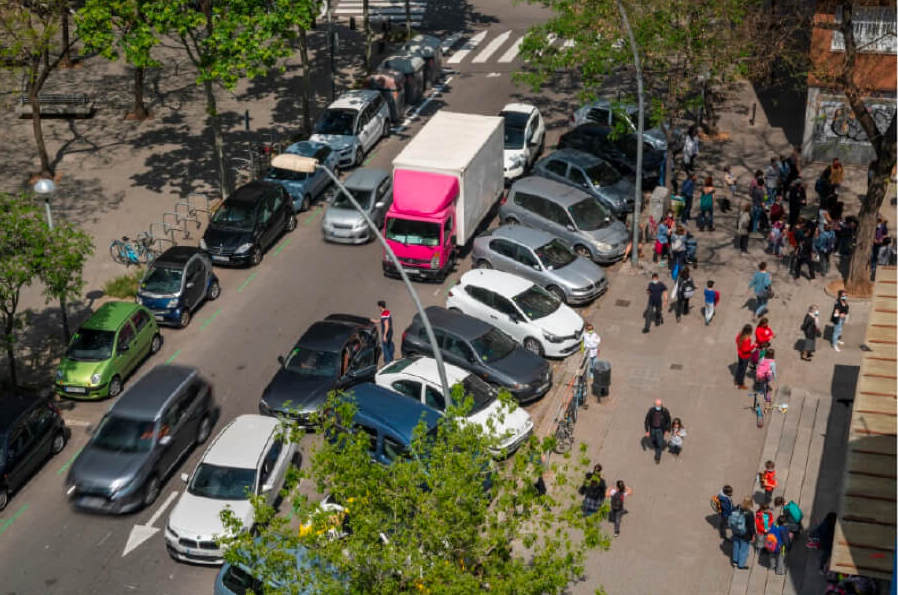
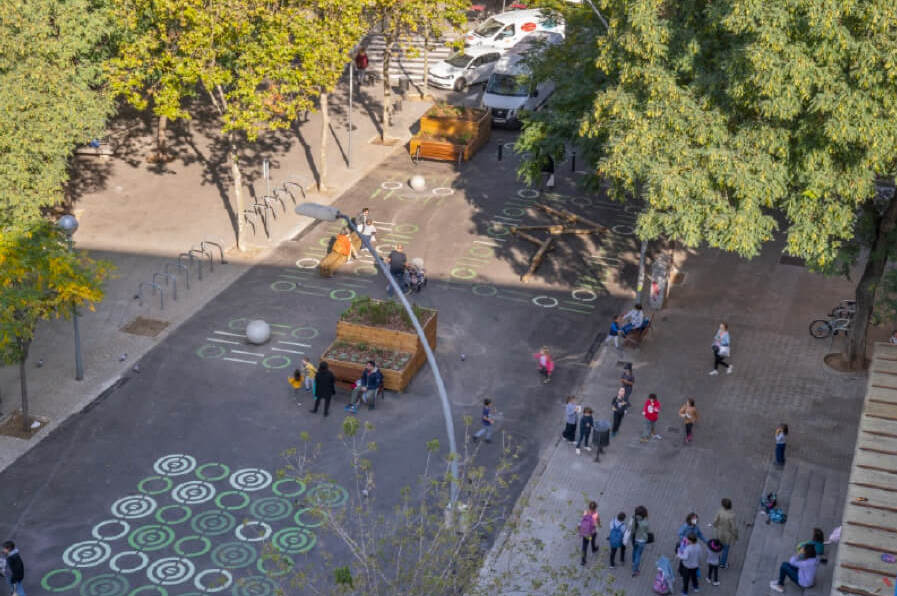
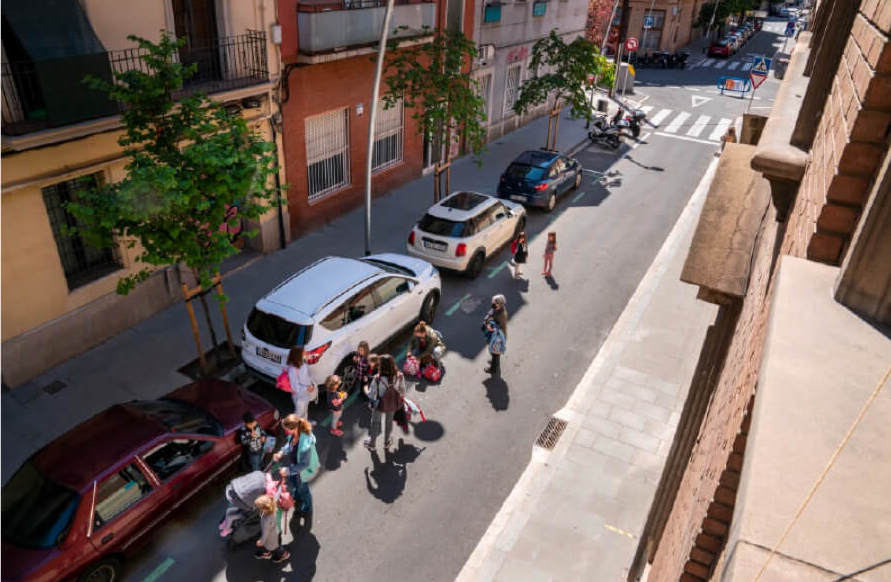
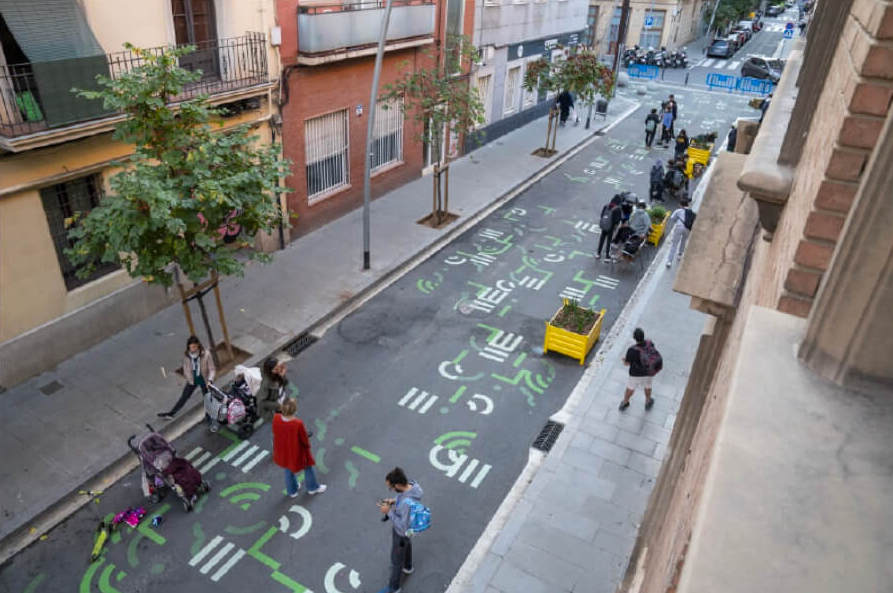

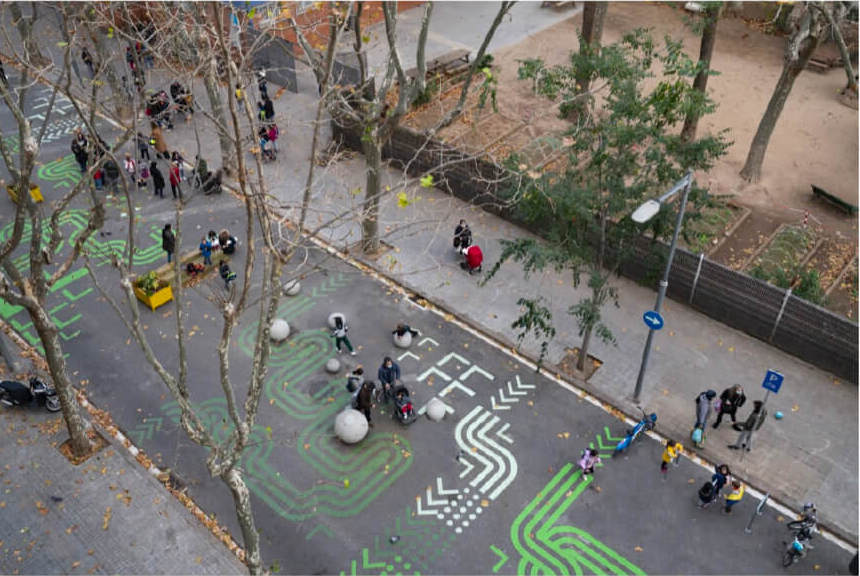
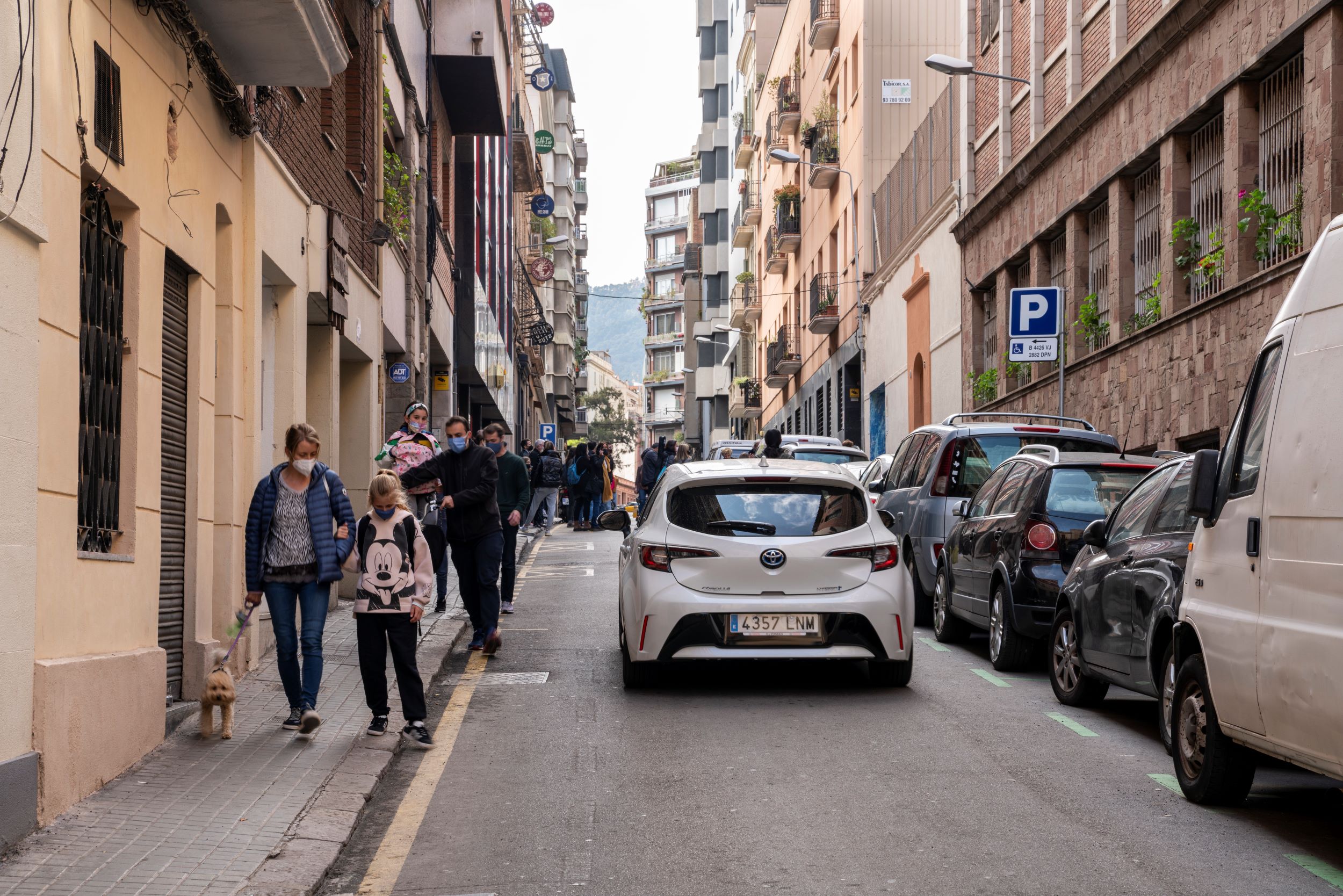
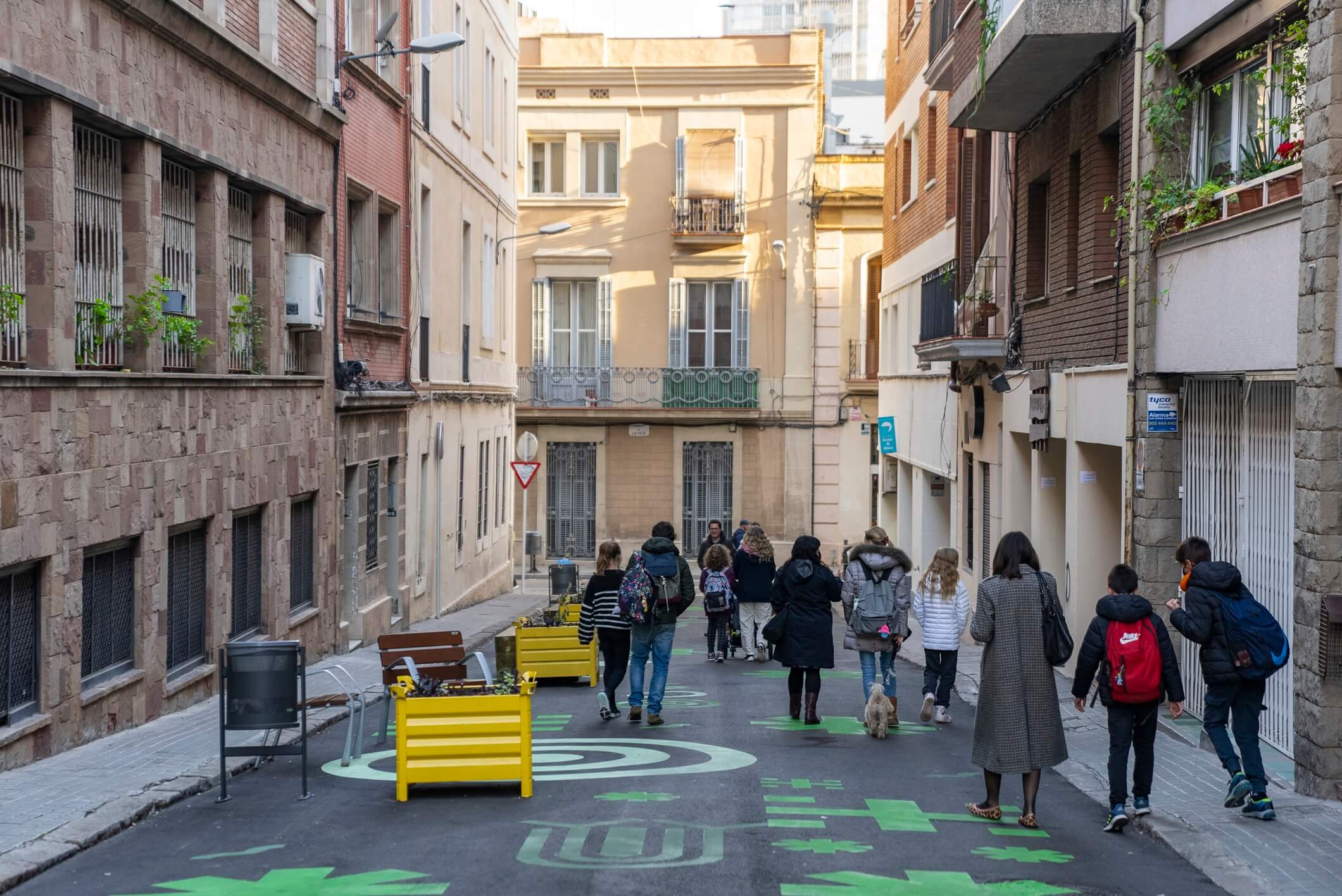
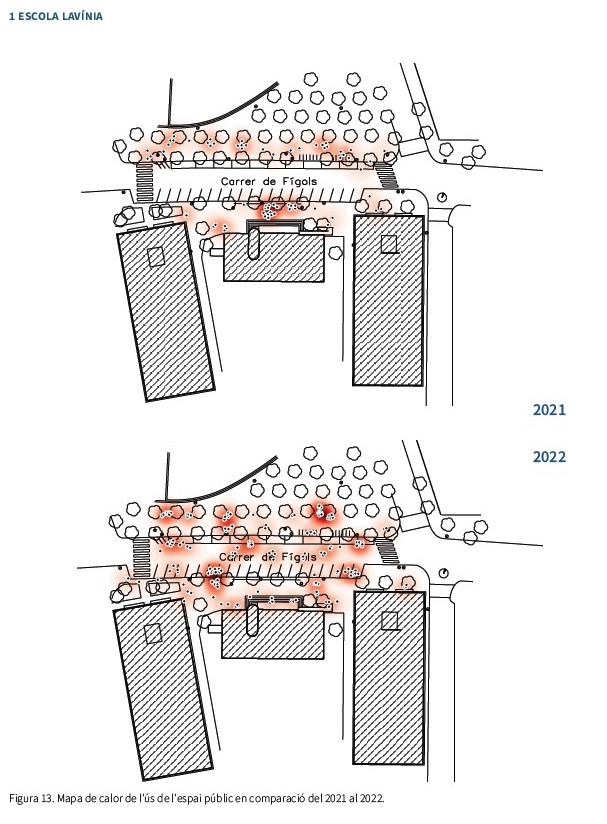
Pre-post intervention comparison of use of public space before and after the School Street intervention on c/Figols in Barcelona.
Photo Credits: Ajuntament de Barcelona.
